The following Plantar fasciitis exercises form part of our step-by-step Plantar fasciitis rehabilitation program. Created by elite-level sports physiotherapist Phil Pask it includes stretching, strengthening, activation and movement control exercises.
The Plantar fasciitis rehab program comprises five phases. Phase 1 is the acute phase where your aim is to reduce pain and inflammation. However, there are still a number of Plantar fasciitis exercises you can still do.
Stretching exercises
These exercises focus on stretching the plantar fascia under the foot and calf muscles at the back of the lower leg.
Foot massage toe flexed
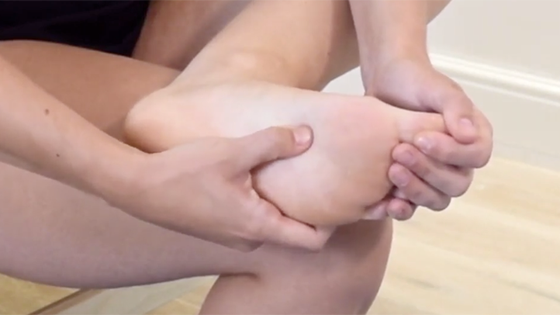
Take your big toe and gently bend it upwards, then massage gently but deeply. As it releases stretch your big toe up further and repeat the massage.
Toe on the heel of the foot
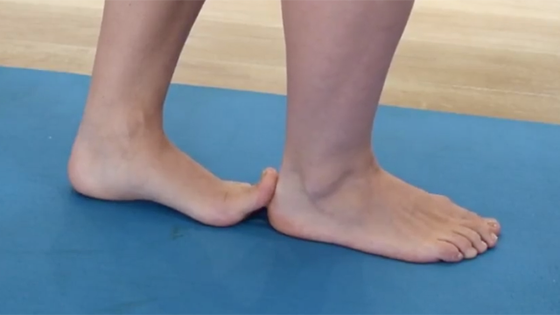
Place one foot in front of the other, and gently press your toe into the heel of the front foot. Then stretch the joint of the back foot.
Sustained calf stretch
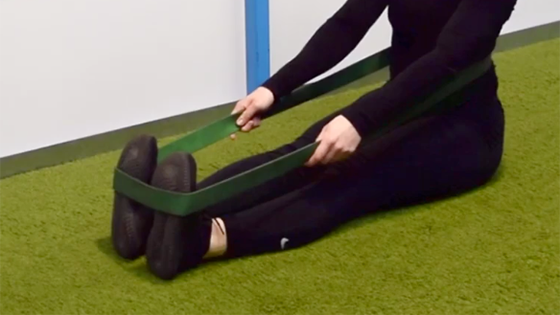
Wrap a resistance band or strap around your feet. Gently pull up to feel a stretch in your calf muscles.
Calf stretches (bent and straight) leg
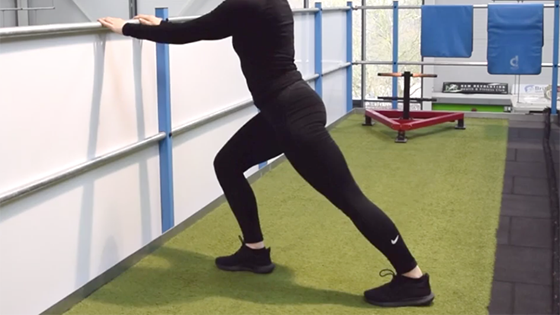
Stand with the leg you want to stretch at the back. Bend your knee and ease in to feel a stretch lower down at the back of your leg. Stretch with your back knee straight to target the larger Gastrocnemius muscle.
Neural flossing plantar fasciitis exercise
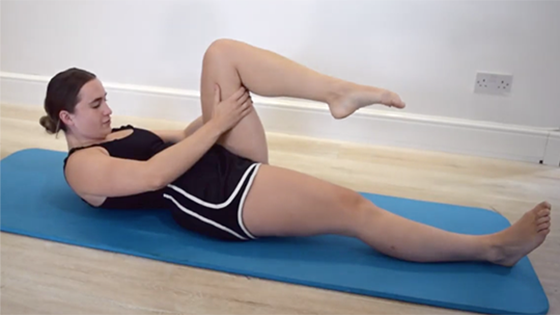
This gently mobilises the nerve tissue, specifically the sciatic nerve. Lie on your back and hold one leg. Straighten your leg and lift your head up to increase the stretch. Your head follows your foot as you turn the tension on and off. Do not force it.
Strengthening exercises
The following Plantar fasciitis exercises strengthen the ankle and foot without placing stress on your foot arch at this stage. Aim to do them once or twice a day.
Isometric ankle exercises
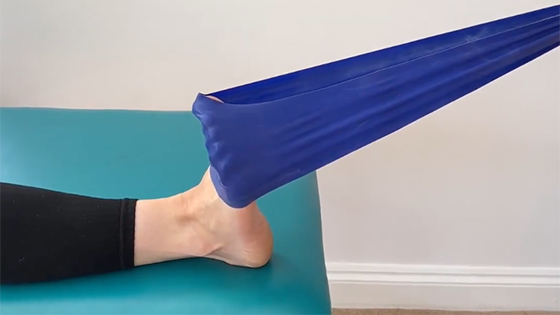
These work the ankle joint in all directions statically, without movement. They improve ankle stability. Make sure to include inversion, eversion, plantar flexion, and dorsiflexion.
Towel scrunching
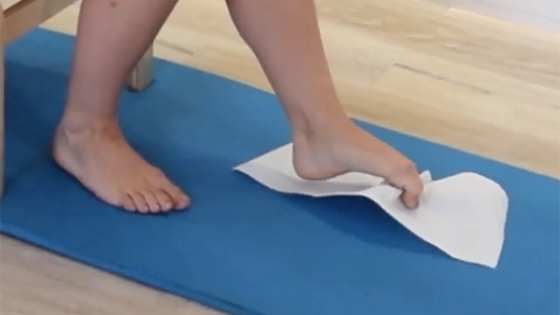
To strengthen the intrinsic muscles within the foot, scrunch a tea towel or paper towel using your toes. Repeat for approximately 30 seconds or until the muscles begin to fatigue. Alternatively, you can pick up a pencil or marble with your toes.
Soleus wall sit plantar fasciitis exercise
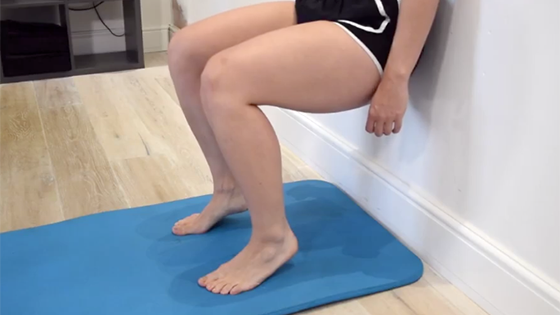
Sit against the wall and slide down so you are in a ‘comfortable’ position with your thighs horizontal. Then raise your heels up off the floor. Push down through the ball of your foot and toes.
Activation exercises
Although these are not specific Plantar fasciitis exercises they are important for keeping the hip muscles working. This is because they tend to switch off if you have to rest for a period of time.
Clam in flexion
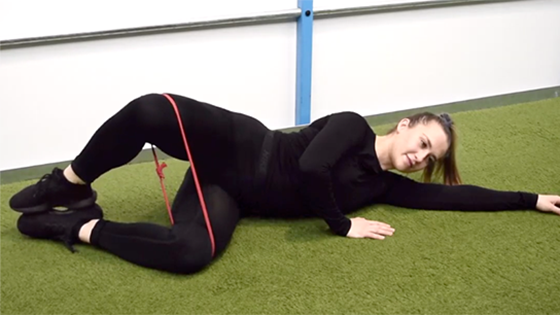
Lie on your side with your knees bent and slightly forward so your hips are in flexion. Raise your knee up in a slow, controlled movement and return to the start position.
Clam in extension
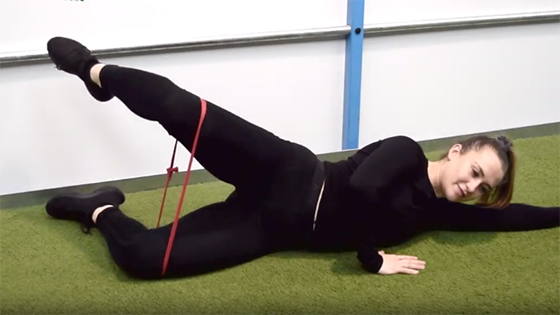
Performing the clam exercise with your knees moved further back places your hips into extension. This targets the muscles on the outside of the hip in a slightly different way.
Bridge from a chair
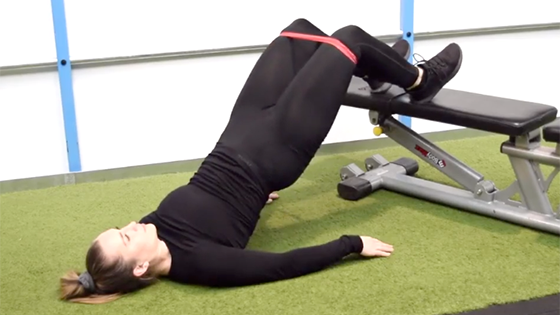
This works the gluteal muscles in particular, as well as brings your core into play. Place a band around your knees to increase the tension on the outside hip muscles as you perform the exercise.
Movement control exercises
These improve your proprioception and balance. They start off easy but get more difficult later in the program.
Seated wobble board
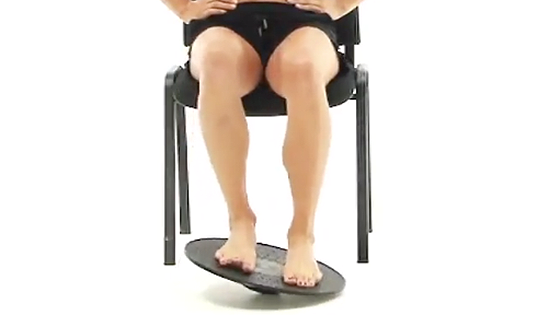
Whilst sitting down place the wobble board under the feet and slowly rotate it a number of times in each direction.
Double leg stand eyes closed
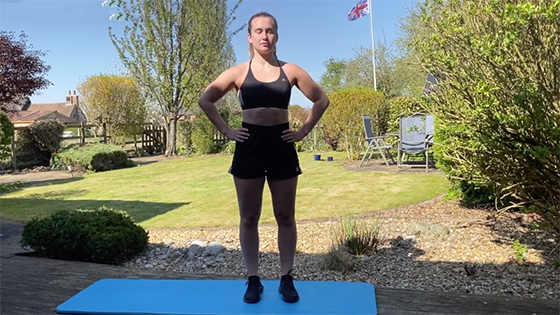
Stand with your weight equally balanced on both legs. Be aware of where your centre of gravity is. Close your eyes and hold the position without moving or swaying around. Then open them and repeat.
Program author: Phil Pask
Phil is one of the World’s most experienced Sports Physiotherapists. He has been England Senior Rugby Team Physiotherapist since 1997, continuing his role in recent years as Consultant Physio to the team. He was a player, physio, and head of performance at Northampton Saints from 1986 – 2002.




